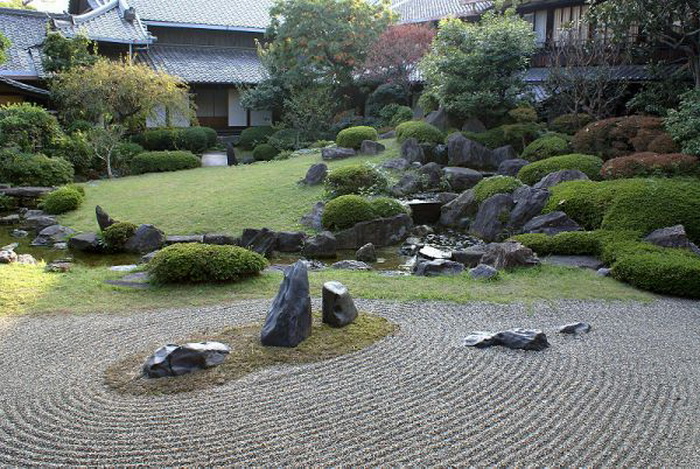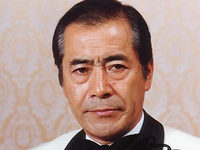ABOUT KOGEN THEATER
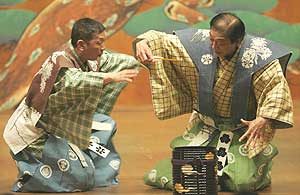 The Kyogen Theater, of which we are actors, is the oldest theater in Japan. Perhaps you can even say that this is one of the oldest theaters in the world. They say that Kyogen was born 600 years ago, and during these 600 years, the performances of the Kyogen theater are constantly played without interruption. But the Kyogen that you will see now, it is not played in exactly the same form as it was 600 years ago.
The Kyogen Theater, of which we are actors, is the oldest theater in Japan. Perhaps you can even say that this is one of the oldest theaters in the world. They say that Kyogen was born 600 years ago, and during these 600 years, the performances of the Kyogen theater are constantly played without interruption. But the Kyogen that you will see now, it is not played in exactly the same form as it was 600 years ago.
The fact is that our ancestors watched the performances of the Kyogen theater in the same way, with the same mood as you are watching, for example, modern performances, television programs or film programs. Just like today, in a modern theater, then themes changed every day, the performances played by the actors changed. And for 200 years, the Kyogen Theater has remained such a modern theater, the Continue reading
CLOTHES IN TRADITIONAL JAPANESE ARTS
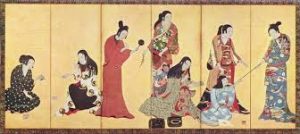 In today’s world, traditional clothing naturally gives way to a European dress. Kimono is also subject to change. Now it is made using modern dyeing and weaving technologies. Its decoration changes according to demand. The national costume, along with other cultural phenomena, has become a platform for experiments in attempts to find new opportunities for its development and transformation today. But despite any social and cultural changes, the world of traditional arts in Japan remains almost unchanged, which makes this country unique in the eyes of the whole world. Continue reading
In today’s world, traditional clothing naturally gives way to a European dress. Kimono is also subject to change. Now it is made using modern dyeing and weaving technologies. Its decoration changes according to demand. The national costume, along with other cultural phenomena, has become a platform for experiments in attempts to find new opportunities for its development and transformation today. But despite any social and cultural changes, the world of traditional arts in Japan remains almost unchanged, which makes this country unique in the eyes of the whole world. Continue reading
BORN EARLIER, Sensei
 Who do you think this is? “Born before” preserves the wisdom of generations and transfers it to others. They go to him for advice. He is respected and loved. This is as important a person as parents, and sometimes more important. Guessed?
Who do you think this is? “Born before” preserves the wisdom of generations and transfers it to others. They go to him for advice. He is respected and loved. This is as important a person as parents, and sometimes more important. Guessed?
Of course, this is a teacher, and in Japanese – sensei.
By default, we translate this word as “teacher, teacher,” but for the Japanese it contains a whole world of relationships built on respect, reverence and love. Parents give life, and Sensei teaches us how to live. Even in the fairly recent past, many noble Japanese tried to give their children to teachers and mentors early, so that children could learn the wisdom of life earlier. The mentor became the second father. If there weren’t those who were “born earlier”, then there wouldn’t be all that we have now, that’s why the Japanese treat Sensei with reverence, catch Continue reading
BONSAI: UNIVERSE IN TREE
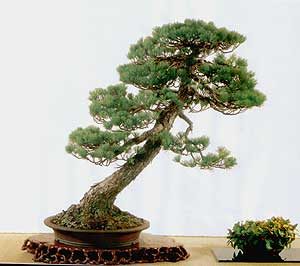 In the East, trees, herbs, and flowers are worshiped as living beings. They conduct confidential conversations with them, as with close friends. They are idolized. Monuments are erected to beloved plants when their life suddenly ends. It has been so since ancient times. Previously, they asked for wind and rain not to break trees. In ancient chants they prayed for an extension of the instant of flowering.
In the East, trees, herbs, and flowers are worshiped as living beings. They conduct confidential conversations with them, as with close friends. They are idolized. Monuments are erected to beloved plants when their life suddenly ends. It has been so since ancient times. Previously, they asked for wind and rain not to break trees. In ancient chants they prayed for an extension of the instant of flowering.
Trees in the East are perceived as beings standing on a par with humans, and they tend to experience the same feelings. The Buddhist idea that everything has a soul and can be reincarnated into anything it attracts to contributes to this understanding of the world.
A man is connected with trees by family ties. All these are phenomena of a single essence, as Zentika tells about it in the play “Basho”, or “Banana Tree”:
The East, permeated with symbolism associated with plants, sometimes well-known, never ceases to Continue reading
HISTORY OF CERAMICS OF JAPAN
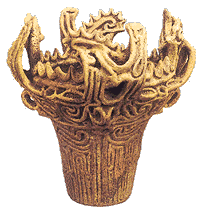 The discovery of archaeological sites with ceramics of about 13 thousand years old on the Japanese islands in the early 60s was at that time a real world sensation, refuting the popular belief that the Middle East was the center of the earliest pottery. Today, ceramic complexes aged 13-10 thousand years are known not only in Japan, but also in the south of the Russian Far East, in eastern and southeastern China, in Korea.
The discovery of archaeological sites with ceramics of about 13 thousand years old on the Japanese islands in the early 60s was at that time a real world sensation, refuting the popular belief that the Middle East was the center of the earliest pottery. Today, ceramic complexes aged 13-10 thousand years are known not only in Japan, but also in the south of the Russian Far East, in eastern and southeastern China, in Korea.
1. ANCIENT CERAMICS. The oldest pottery in the world was first discovered on the Japanese archipelago. In 1960, during the excavation of a primitive site in Fukui Cave (Nagasaki Prefecture, Kyushu Island), fragments of clay vessels were discovered whose age, according to radiocarbon analysis, is about 13 thousand years. Most of the monuments are open in the central and southern parts of the island. Honshu, in the north of Fr. Kyushu. The oldest ceramic complexes of the most northern island of Hokkaido date back to about 9 thousand years. Samples of ancient Japanese ceramics Continue reading



